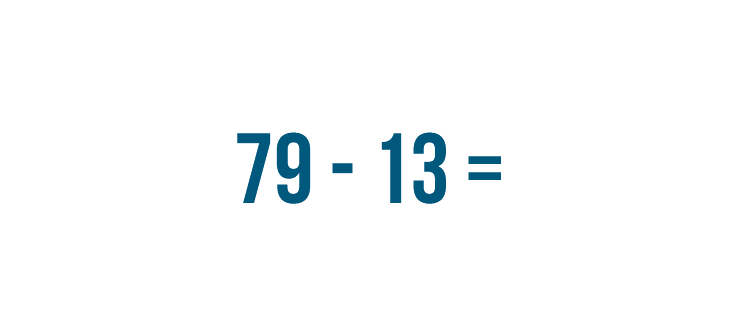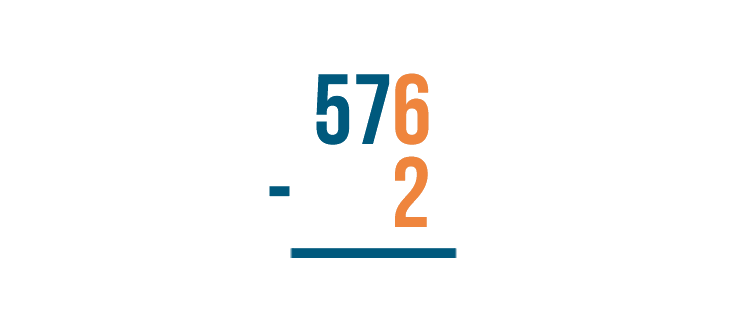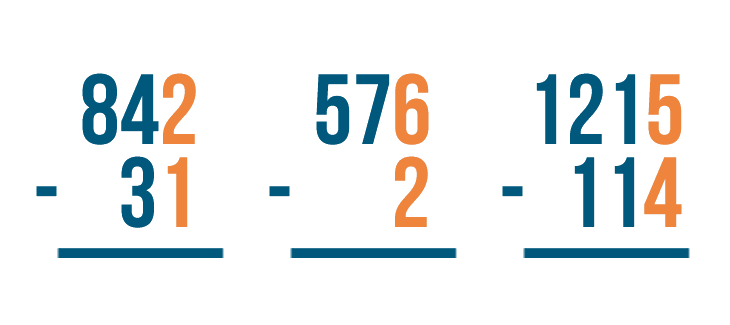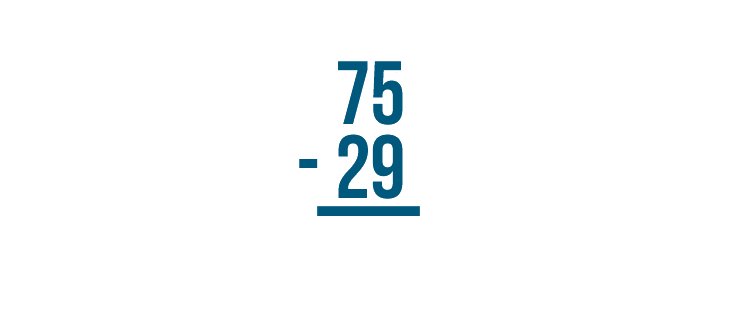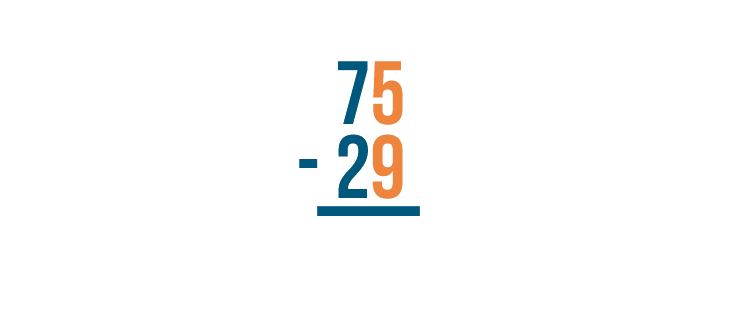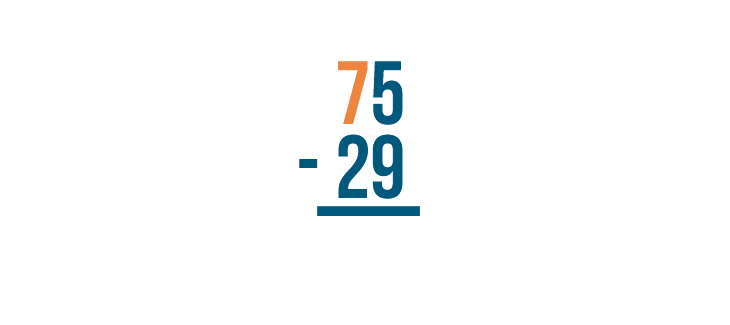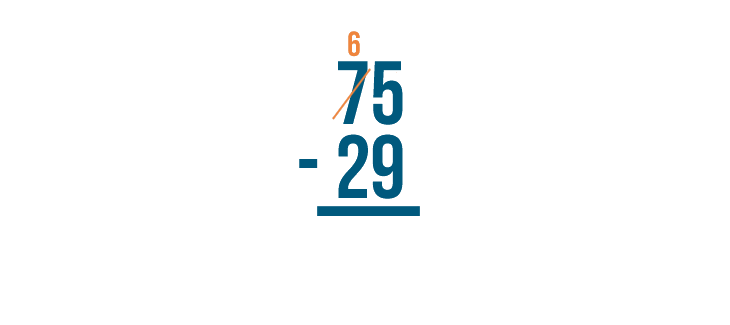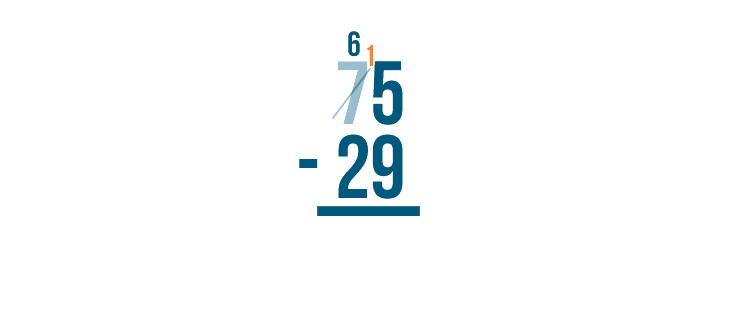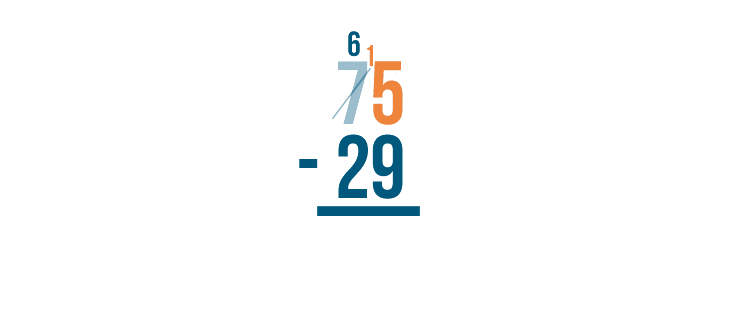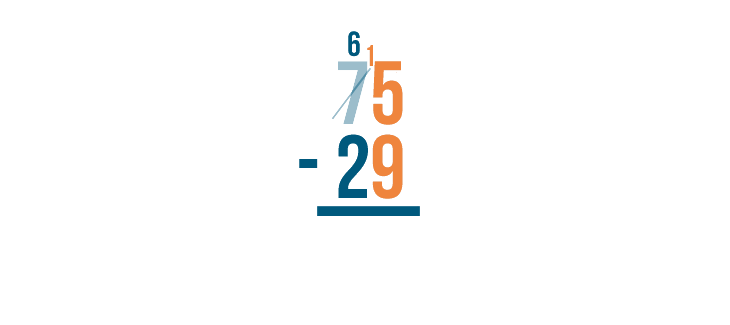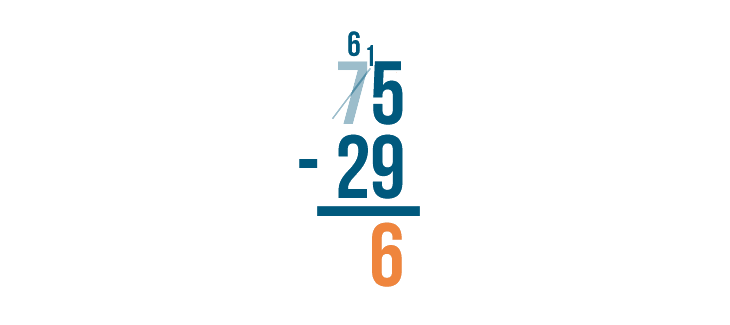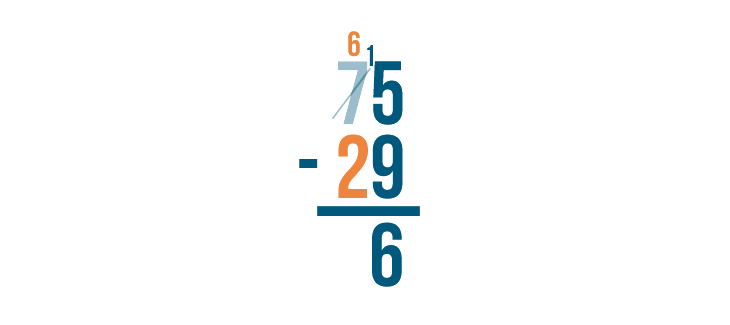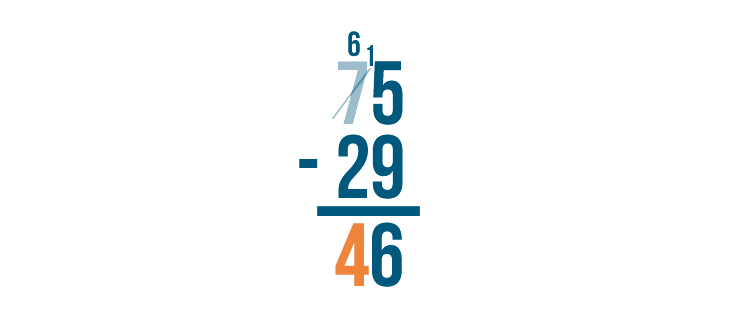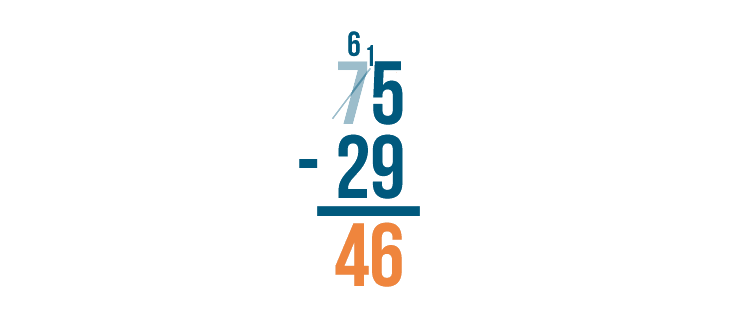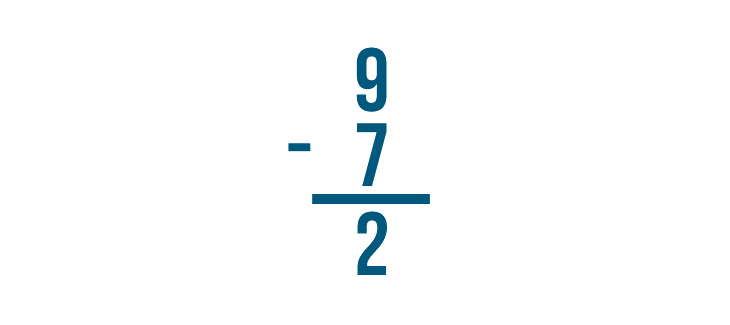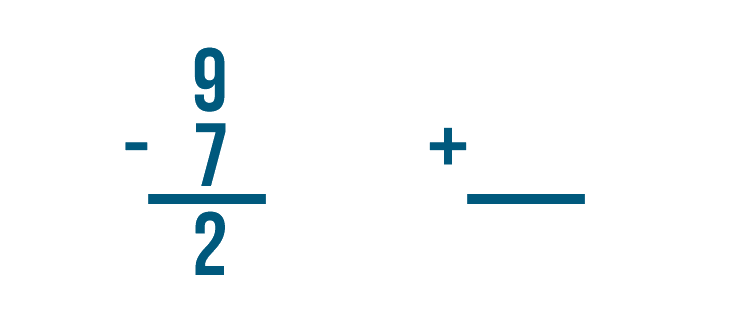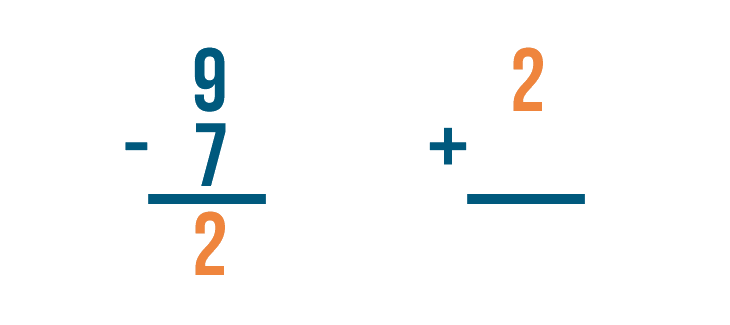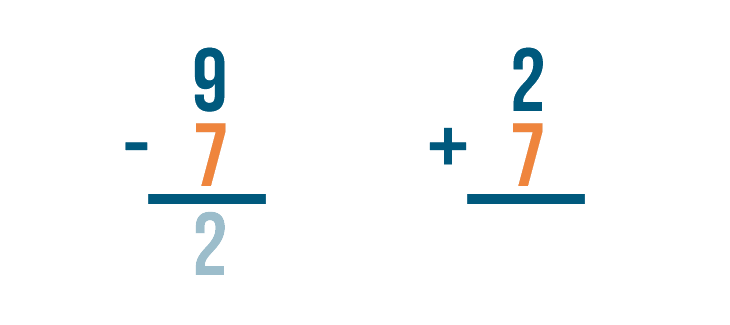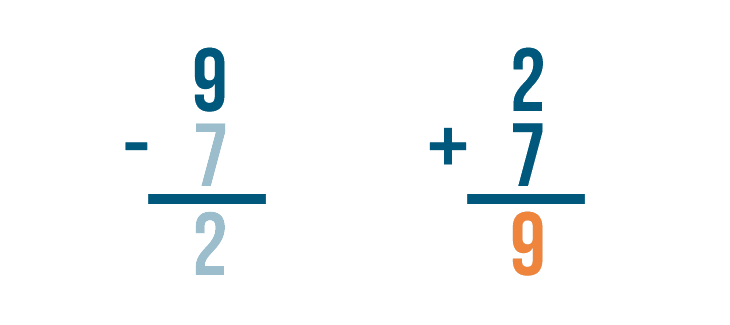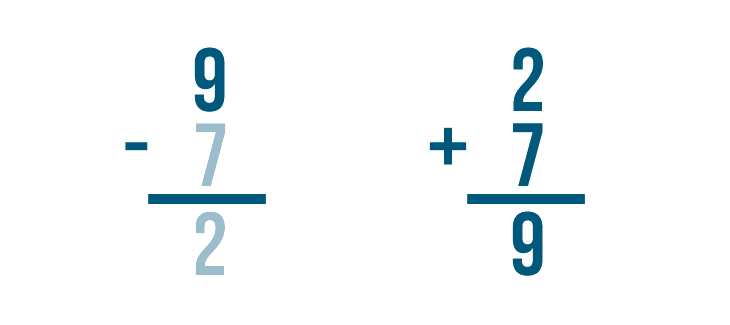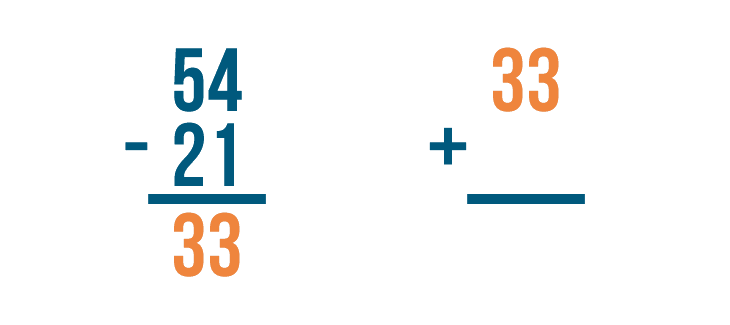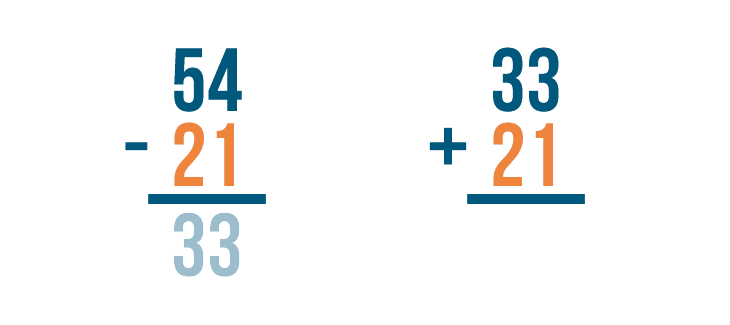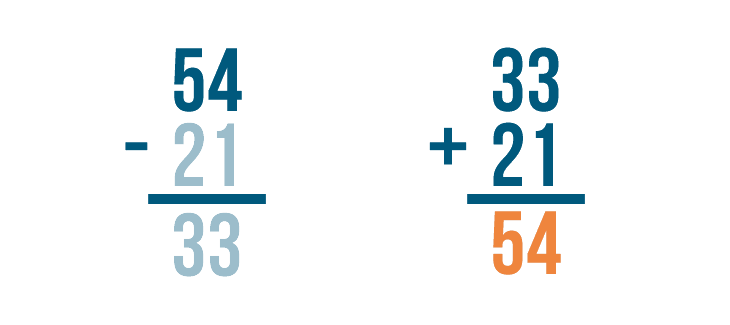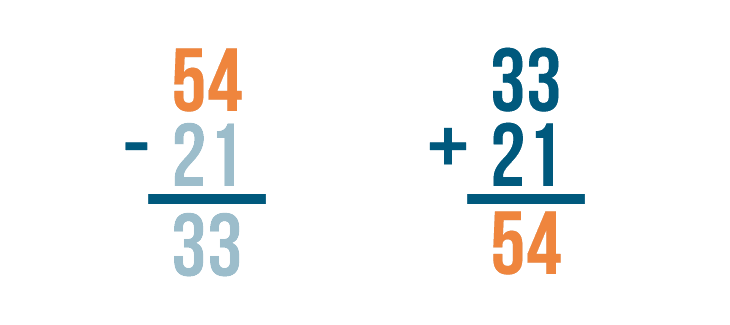Addition and Subtraction
Subtracting Two- and Three-Digit Numbers
Subtracting Larger Numbers
In Lesson 3, we learned that counting and using visuals can be useful for solving basic subtraction problems. For instance, say you have 9 apples and you use 6 to make a pie. To find out how many apples are left, you could represent the situation like this:

It's easy to count and see that 3 apples are left.
What if you need to solve a subtraction problem that starts with a large number? For instance, let's say instead of making an apple pie, you want to pick apples from an apple tree. The tree has 30 apples and you pick 21. We could write this as 30 - 21.

You might see why counting to solve this problem isn't a good idea. When you have a subtraction problem that starts with a large number, it could take a long time to set up the problem. Imagine the time it would take to count out 30 objects and then take away 21! Also, it would be easy to lose track as you counted. You could end up with the wrong answer.
For this reason, when people solve a subtraction problem with large numbers, they set up the problem in a way that makes it easy to solve one step at a time. Let's see how this works with another problem: 79 - 13.
We can see that 79 - 13 and ![]() mean the same thing — they're just written differently.
mean the same thing — they're just written differently.
Now you try stacking! Write these situations as stacked subtraction expressions. Don't solve them yet — simply set them up.
You have 272 books and you donate 60 to a library.
57 passengers are riding a bus. 24 get off at the first stop.
A clothing store has 19 scarves and sells 10.
Solving Stacked Subtraction Problems
If you feel comfortable with the subtraction skills from Lesson 3, you're ready to start solving stacked subtraction problems.
In the slideshow, you saw that stacked subtraction problems are always solved from right to left. The expressions below are solved the same way. First, the bottom right digit is subtracted from the top right digit. Then, the bottom left digit is subtracted from the top left digit.
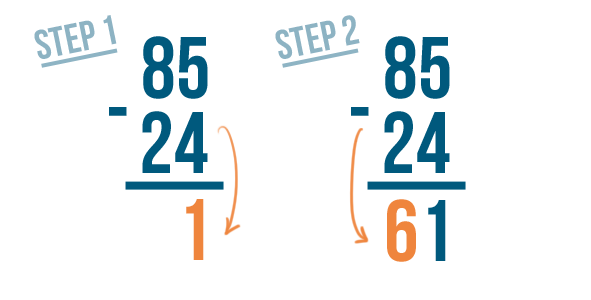
Now you try it. Solve these stacked subtraction problems.
Subtracting Larger Numbers
Stacked subtraction can also be used for finding the difference of larger numbers. No matter how many digits there are, you subtract the same way every time — from right to left.
Try it. These subtraction problems have larger numbers. Practice solving them from right to left.
Borrowing
Can you solve this problem?
5 - 9
Of course not — 5 is smaller than 9. If you have five, it's impossible to subtract nine. In other words, you can't subtract a larger number from a smaller number.
How could you solve this next problem, then?
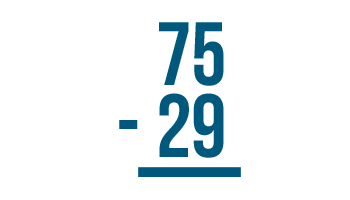
There's that 5 again, and 9 is beneath it. But we know that 75 is larger than 29, so we have to be able to subtract it somehow. The trick is a technique called borrowing.
Let's see how it works.
As you borrow, always cross out the digit you borrow from and write the new value above it. Remember to always place the 1 next to the smaller digit.

Try these problems to practice borrowing. Click the B button to borrow.
Sometimes the top number might have two or more digits that are smaller than the digits beneath them. In that case, you'll need to borrow more than once. It will always work the same way. You'll always subtract 1 from the digit to the left and place 1 next to the smaller digit.
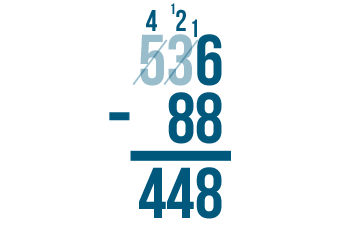
Try solving these subtraction problems to practice borrowing more than one time.
Checking Your Work
In the last few lessons, you learned how to solve addition and subtraction problems. As you practice these math skills, it's a good idea to get into the habit of checking your work. Checking will help you know if your answers are correct. When you're ready to check the answer to subtraction problems, you'll need to use addition.
Practice!
Practice subtracting these problems. You'll have to use borrowing to solve some of the problems. There are 4 sets of problems with 6 problems each.



